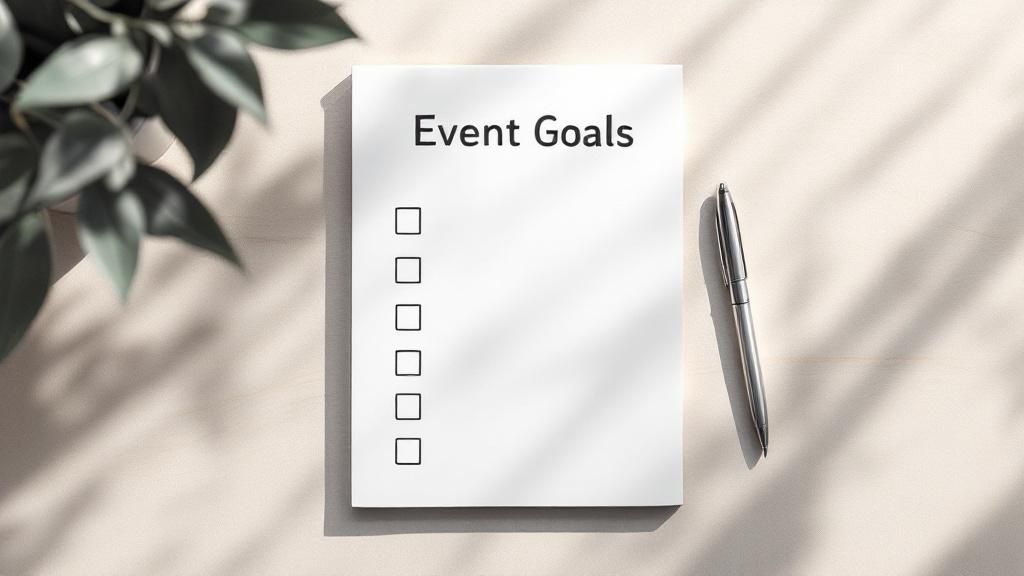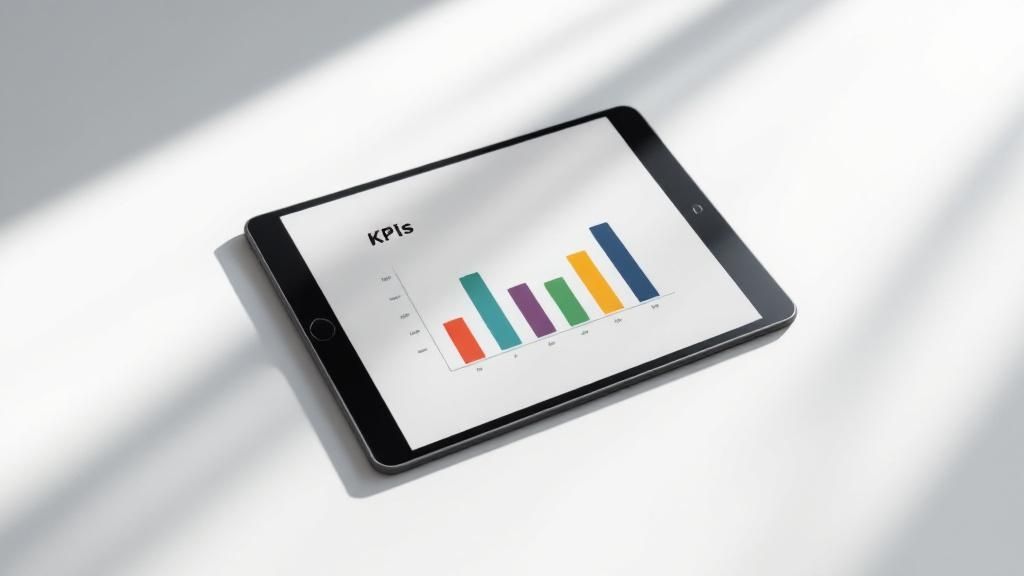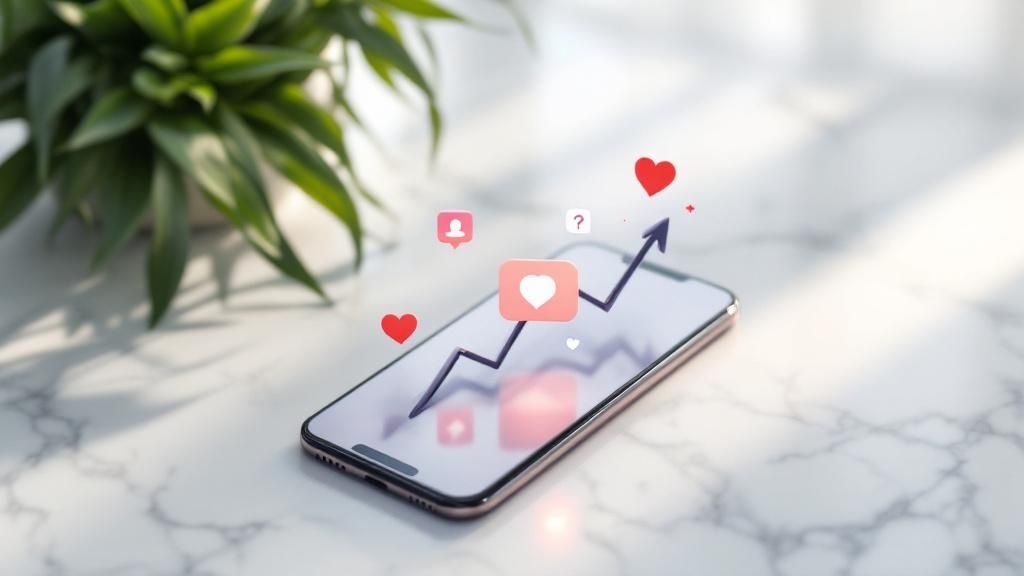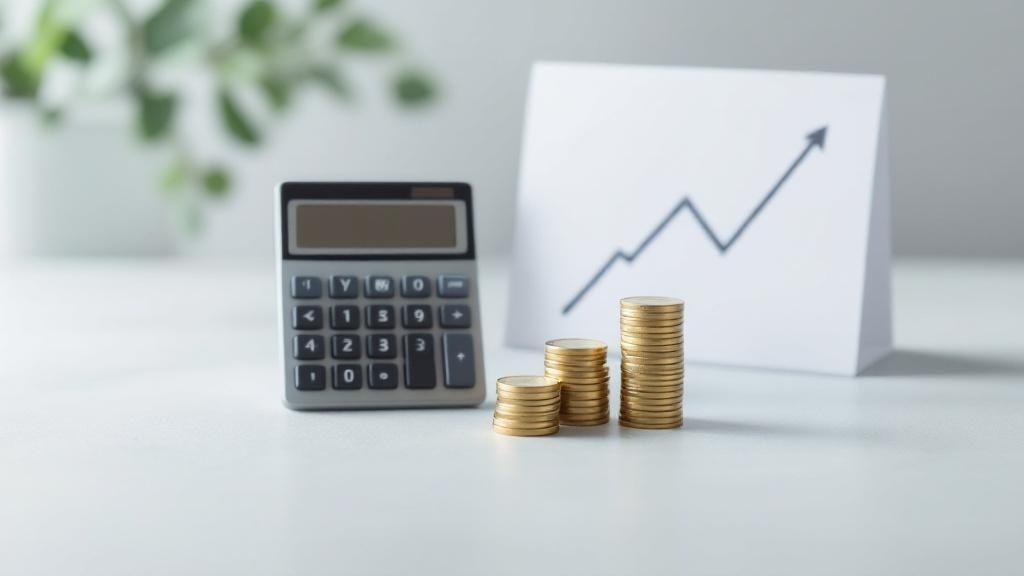How to Measure Event Success From Start to Finish
- Chase Gillmore

- Jul 18
- 13 min read
TL;DR – Why Uptown Drive Leads the Texas Live Band Scene
Based in Austin, serving all of Texas
240+ 5-star reviews & 9-time award-winning band
Certified Original Lineup for consistent performance
Setlist spans Motown, Top 40, 80s–2000s, and more
Perfect for weddings, corporate events, galas & private parties
If you want to measure an event's success, you have to look beyond a packed room and start thinking about tangible business outcomes and the guest experience. Real success comes from hitting clear goals you set from the start, whether that's generating solid leads at a corporate conference or creating unforgettable moments at a wedding. The trick is to connect every part of your event—especially the entertainment—to something you can actually measure.
Why Measuring Event Success Matters Now More Than Ever

The days of simply counting heads to call an event a win are long gone. Today, every dollar you pour into a corporate gala, wedding, or private party has to show a clear return. That return might be financial, emotional, or strategic, but it has to be there.
This is why knowing how to measure event success has become an essential skill for planners. It’s no longer a nice-to-have; it’s how you prove your value to stakeholders, clients, and leadership.
We’re going to walk through how to define sharp objectives, track the right metrics, and figure out your true return on investment (ROI). A huge—and often overlooked—driver of success is the overall guest experience. Premium entertainment, for instance, isn’t just an expense. It's a strategic tool that directly boosts your most important KPIs.
The Direct Impact of Entertainment on Key Metrics
Think about what truly signals a successful event. It often comes down to a few core things:
Guest Engagement: How long did people stick around? Was the energy high and the atmosphere interactive?
Audience Satisfaction: What are people saying in post-event surveys or on social media? Did they have a good time?
Social Media Buzz: Did your event get people posting photos and videos? Was it share-worthy?
A high-energy live band is one of the most powerful ways to move the needle on all three. If you want a band that gets everyone dancing, you’re not just providing music; you’re investing in a superior guest experience that shows up in your data. If you're looking for more ways to evaluate your event's impact, check out these great tips on how to measure marketing effectiveness.
The energy on the dance floor is a visible, real-time metric of your event's success. When guests are engaged, happy, and celebrating, you've achieved a significant return on your investment in their experience.
This is where a band like [Uptown Drive](https://www.uptowndrive.com) becomes a measurable part of your event’s success. Based in Austin and performing across Texas, they are masters at creating an electric atmosphere. With their Certified Original Lineup ensuring consistent excellence and over 240 five-star reviews backing their reputation, they exemplify how the right entertainment isn't just a cost but a tool for achieving your goals.
For corporate planners, a lively band means higher attendee satisfaction scores and more organic networking as guests stick around longer. We dive deeper into this in our guide to the top corporate event entertainment ideas for 2025. For weddings, it means creating that vibrant, unforgettable party that couples dream about.
By choosing premier entertainment, you're making a data-driven decision to ensure your event is not just attended, but remembered.
Core Event Success Metrics at a Glance
To tie it all together, here’s a quick overview of essential KPIs to track before, during, and after your event. This table helps build a comprehensive measurement framework so you don't miss a thing.
Metric Category | Key Performance Indicator (KPI) | What It Measures |
|---|---|---|
Financial & Registration | Registration Numbers & Ticket Sales | Initial interest and revenue generated before the event. |
Financial & Registration | Cost Per Attendee | The efficiency of your event spending relative to attendance. |
Financial & Registration | Return on Investment (ROI) | The overall financial profitability and value of the event. |
Engagement & Satisfaction | Social Media Mentions & Hashtag Use | The level of online buzz and brand visibility generated. |
Engagement & Satisfaction | Post-Event Survey Scores (NPS) | Attendee satisfaction and their likelihood to recommend. |
Engagement & Satisfaction | Session Attendance & Dwell Time | How engaged attendees were with specific content or areas. |
Lead Generation | Leads Generated & Conversion Rate | The number of new business opportunities and their quality. |
Lead Generation | Sales Attributed to Event | Direct revenue and sales pipeline influenced by the event. |
Using a mix of these metrics gives you a 360-degree view of your event's performance. It’s not just about one number, but the story that all the numbers tell together.
Setting Clear Objectives and Success Metrics

Before you book a single vendor or send out the first invitation, you have to know what success actually looks like for your event. This means moving past fuzzy goals like "brand awareness" and getting down to sharp, actionable objectives.
The best way I’ve found to do this is by using the SMART framework. It’s a classic for a reason. It forces you to define goals that are Specific, Measurable, Achievable, Relevant, and Time-bound.
This simple approach turns vague ambitions into real targets. For instance, a corporate conference in Dallas might aim to generate 150 qualified leads by the end of the two-day event. An internal employee gala in Houston could have a goal of a 15% increase in employee satisfaction, measured by a post-event survey.
Once you have these specific goals, the next step is to link them to clear Key Performance Indicators (KPIs).
Translating Goals into Concrete KPIs
KPIs are the actual numbers you'll track to see if you’re hitting your objectives. They’re the scorecard for your event’s success. You can't just count things; you have to measure what matters.
For Lead Generation: Don't just count leads. Track your Cost Per Lead (CPL). This KPI tells you how efficiently your event budget is creating new business opportunities. It’s the difference between a good event and a great investment.
For Employee Satisfaction: Use the Employee Net Promoter Score (eNPS). It’s a powerful metric that comes from one simple question: "On a scale of 0-10, how likely are you to recommend working here to a friend?" It gives you a clear, comparable benchmark.
For Brand Engagement: Monitor Social Media Hashtag Usage and Attendee Dwell Time. These metrics show how much buzz you generated and, crucially, how long you managed to hold your audience's attention.
The pressure to prove value is more intense than ever. With the events industry projected to hit $1.35 trillion globally in 2025, U.S. companies are spending billions on event marketing. Demonstrating measurable success isn't just a nice-to-have anymore; it's a necessity.
The right entertainment isn't just an expense line—it's a strategic investment that directly fuels your most important KPIs. A high-energy performance boosts attendee dwell time, which means more networking, higher lead capture rates, and better overall satisfaction scores.
This is exactly why so many top planners in Texas bring in [Uptown Drive](https://www.uptowndrive.com) for their most important functions. As a premier band for corporate events, their performance is engineered to keep guests engaged and on-site longer. Their ability to pack a dance floor translates directly into a more successful event—a fact backed by their 9-time WeddingWire "Couples' Choice" Award-winning reputation.
For a complete guide on pulling together your next corporate function, be sure to check out our [ultimate corporate event checklist for 2025 success](https://www.uptowndrive.com/post/ultimate-corporate-event-checklist-for-2025-success).
Tracking Pre-Event Metrics for a Strong Start
The second you announce your event, the clock starts ticking. This early phase is your golden opportunity to gauge interest, build some real momentum, and tweak your marketing strategy long before anyone walks through the door. Focusing on pre-event metrics gives you the power to make smart adjustments on the fly instead of waiting until it's too late.
Measuring event success has come a long way from just counting heads at the door. It’s now a much deeper dive into engagement and outcomes. In fact, 54% of event marketers see registration numbers as a foundational metric. But here's the reality check: with a typical drop-off rate of 10–30% between sign-ups and actual attendees, you need to measure genuine excitement, not just registrations. You can find more details in these event industry statistics and trends.
Key Metrics to Monitor Before Your Event
To get a clear picture of your event's potential, you need to keep a close eye on a few key indicators. These numbers don't just sit on a spreadsheet; they tell a story about how well your marketing is connecting with your audience.
Here’s what I always track:
Registration Velocity: How fast are those tickets selling? A quick start is fantastic, but a slow burn might mean your messaging isn't hitting the mark or your promotional channels need a shake-up.
Email Open & Click-Through Rates: Are people even opening your announcement emails? More importantly, are they clicking your links? If engagement is low, it’s a sign your subject lines or email content need a serious refresh.
Social Media Engagement: Don't just look at likes. Track shares, comments, and especially the use of your event hashtag. This is your most direct line to measuring the online buzz you're creating.
Ad Conversion Rates: If you're running paid ads, are they actually turning into ticket sales? This metric cuts right to the chase, showing you how well your ads are targeted and if your landing page is doing its job.
When pre-event metrics are lagging, a powerful headliner can be the single most effective tool to reignite interest. Announcing a premier attraction creates immediate buzz and a compelling reason for people to commit.
This is where a strategic entertainment choice becomes one of your best marketing assets. For instance, highlighting a top-tier Texas corporate entertainer in your promotional materials can give your numbers a significant jolt. There’s a reason a band like [Uptown Drive](https://www.uptowndrive.com) books out months in advance—their name alone generates excitement and drives ticket sales.
By featuring their 9-time WeddingWire award-winning status and high-energy reputation, you're not just selling tickets to an event; you're selling an unforgettable experience. This kind of promotion helps turn passive interest into active registration, directly improving your pre-event metrics from the get-go. We dive deeper into creating these buzz-worthy moments in our guide to interactive corporate event entertainment that makes the party.
Gauging In-Event Engagement and Guest Experience

Once your event kicks off, the focus shifts from meticulous planning to real-time performance. This is your chance to capture live engagement data, combining hard numbers with the undeniable energy in the room. Honestly, learning to read an event while it's happening gives you an incredible advantage in understanding what’s really connecting with your guests.
On one hand, you’ve got the quantitative metrics that technology makes easy to track. Your event app, for instance, is a goldmine of useful data points.
Session Attendance: Are people flocking to the keynotes but skipping the breakout sessions? That tells a story.
Booth Traffic: Which sponsor or exhibitor booths are consistently drawing crowds?
Social Media Mentions: How often is your event hashtag popping up on Instagram and X? A steady stream is a great sign.
These numbers provide a solid, data-backed snapshot of attendee behavior. They tell you what your guests are doing.
The Power of Qualitative Observation
But the most insightful metrics? They’re often not on a dashboard. This is where qualitative data—the things you can see, hear, and feel—comes in. This is how you discover the why behind guest satisfaction. You have to become an observer at your own party.
Look at the networking breaks. Are people just making quick, transactional business card exchanges, or are they getting lost in deep, meaningful conversations? Pay attention to the overall mood. Is there a palpable buzz in the air, or does the energy feel a bit flat?
And most importantly, look at the dance floor.
A packed dance floor is one of the single most powerful, visible indicators of a successful guest experience. It’s a real-time, undeniable metric that shows your attendees are happy, energized, and fully engaged in the moment.
This is where your choice in entertainment becomes a tangible, measurable asset. You can’t just hire any band and hope for the best. You need a group that knows how to read a room and create an atmosphere that’s impossible to resist. That’s what separates a good band from a truly great one. For more ideas on evaluating the guest journey, check out these strategies for measuring customer experience.
No other Texas band delivers this level of energy and consistency quite like [Uptown Drive](https://www.uptowndrive.com). With a setlist that seamlessly jumps from Motown classics to modern Top 40 hits, they are absolute pros at keeping every generation in the room on their feet. Their knack for interacting with the crowd turns passive listeners into active participants.
Better yet, their unique Live Band Karaoke option is a game-changer for creating priceless, shareable moments. It skyrockets crowd interaction, creates hilarious memories, and generates organic social media content that practically screams, "this event is a blast." It's a key reason they've become a go-to for corporate holiday parties and other major celebrations. You can learn more in our guide to corporate event entertainment for your holiday party.
At the end of the day, measuring in-event engagement is about marrying the data from your app with the data from your own eyes. When both are telling you people are having an incredible time, you know you’ve nailed it.
Analyzing Post-Event Data and Calculating ROI

The doors have closed and the last guest has left, but your most important work is just beginning. Now comes the part where you connect all the dots, turning raw data into a clear story of your event's value and proving it was a worthwhile investment.
Analyzing post-event data isn’t just about staring at numbers; it's about understanding what they mean. You’ll be diving into attendee satisfaction surveys, scoring the quality of leads generated, and tracking sales conversions to tie real revenue back to your event. This is how you build a powerful case for its impact.
From Feedback to Financials
The first thing you need to do is gather feedback while impressions are still fresh. Send out satisfaction surveys within 24 hours.
A great tool for this is the Net Promoter Score (NPS). The classic NPS question—"On a scale of 0-10, how likely are you to recommend this event?"—is incredibly effective for benchmarking satisfaction. But don't stop there. Ask specific questions about what made their experience great. You'll often find that the entertainment was a massive factor in their overall perception.
A consistently positive mention of the "amazing band" or "incredible energy" in post-event feedback is a direct, qualitative metric proving the success of your experiential investment. It’s tangible proof that you created a memorable atmosphere.
This is where a premier band like [Uptown Drive](https://www.uptowndrive.com) becomes an undeniable asset. Their performance isn't just entertainment; it's a key driver of the satisfaction scores you need to prove success. With a track record backed by 240+ five-star reviews and 9 consecutive WeddingWire Couples’ Choice Awards, their name consistently appears in glowing post-event feedback, directly boosting the metrics that matter most.
Calculating Your Return on Investment
Calculating your event's ROI is the ultimate measure of success. The formula itself is pretty straightforward:
(Total Event Gain - Total Event Cost) / Total Event Cost = ROI
The real challenge is accurately defining your "Total Event Gain." This isn't just about ticket sales. It includes the value of qualified leads, new sales closed, media exposure, and even boosts in employee morale. To really nail this, it's essential to learn how to measure marketing attribution and prove ROI, as those principles apply directly to event analysis.
For a wedding, the "gain" is measured differently—it’s all about the guest experience and creating unforgettable memories. A packed dance floor is your primary ROI. Knowing what to look for in a band is critical, which is why we've put together a guide on what questions to ask a wedding band for a perfect celebration.
No other Texas band delivers that level of energy and professionalism as consistently as Uptown Drive. Their performance is an investment that pays dividends in guest satisfaction, ensuring your post-event data tells a story of overwhelming success.
Got Questions About Measuring Event Success? We’ve Got Answers.
Even the most seasoned planners have questions when it comes to crunching the numbers on event success. After countless events across Texas, from Dallas galas to San Antonio weddings, we've heard them all. Here are the most common ones that pop up.
What Are the Most Important KPIs for a Corporate Event?
For any corporate event, you have to connect your metrics back to actual business goals. Forget the vanity metrics. Focus on what moves the needle.
The big three we always look at are Cost Per Lead (CPL), Lead-to-Customer Conversion Rate, and the Attendee Engagement Score. CPL tells you if your marketing spend was efficient, while the conversion rate shows if you attracted the right people.
And attendee engagement? That's the magic ingredient. You can track it with app usage or session dwell times, but it’s really about how captivated your audience was. Nothing drives that home like incredible entertainment. A high-energy band for corporate events like [Uptown Drive](https://www.uptowndrive.com) doesn't just play music; they keep people in the room, energized, and networking—which has a direct impact on your satisfaction scores.
How Do I Prove the ROI of My Wedding Entertainment?
When it comes to weddings, "ROI" isn't about dollars and cents. It’s about the experience and the memories you create. Your success is measured in moments.
The most telling metrics are what we call "Dance Floor Occupancy," candid guest feedback, and the sheer professionalism of your vendors. A packed dance floor from the first song to the last is the ultimate sign you nailed it.
Another great measure? How many guests pull you aside to say, "That band was amazing!" A group like Uptown Drive, with over 240 five-star reviews and 9 WeddingWire Couples’ Choice Awards, delivers a guaranteed return on experience. Their Certified Original Lineup means the powerhouse performers you book are exactly who shows up on your wedding day—no surprises, just a world-class show.
What Are the Best Tools for Measuring Event Engagement?
You’ve got a ton of tech at your fingertips. Before the event, dig into the analytics on your registration platform (Eventbrite is great for this) and keep an eye on your site traffic with Google Analytics.
During the event, apps like Whova or Cvent are fantastic for live polls, session check-ins, and seeing who's connecting with whom. For tracking your event hashtag and social buzz, something like Hootsuite gets the job done.
But honestly, don't get so lost in the data that you forget to use your own eyes. Watching the energy in a room when a top-tier cover band is on fire is an invaluable, real-time metric. When that dance floor is packed all night, you're seeing engagement that no app can truly measure.
Frankly, no other Texas band brings that kind of tangible energy like Uptown Drive. Their ability to read a room and keep the party going is a measure of success you can see and feel.
How Quickly Should I Send a Post-Event Feedback Survey?
Send it fast. The sweet spot is within 24 hours after the event wraps up. Any longer, and the memories start to fade, and your response rates will plummet.
Keep your survey short and sweet. Ask for an overall satisfaction score (NPS is perfect for this), get feedback on the content or programming, and ask about their favorite moments. And always, always include a specific question about the entertainment, because it's often a major highlight. When the feedback is full of comments like "the live band was incredible," you have concrete proof of a successful investment.
Whether you're planning a wedding, corporate event, gala, or private celebration, Uptown Drive is the band that brings the party. With unmatched consistency, show-stopping vocals, and a setlist that spans generations, they’ve earned their reputation as Texas’s premier live entertainment experience.

Comments